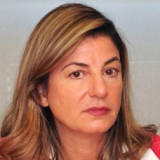War in Ukraine creates hunger and food supply panic in Peru
Russia’s war in Ukraine impacts everyone, everywhere. We’re tracking the global fallout. I am Kenneth R. Rosen, a contributing editor with Coda Story. In this edition, war in Ukraine sends fertilizer prices soaring in Peru, making even growing food a problem in South America’s most food insecure country.
Peru has been in turmoil since December, with the removal of former union leader Pedro Castillo as president. Peruvian prosecutors said earlier this month that they would be investigating the conduct of the police, the army and other security personnel who used deadly force against protesters. Much of the violence and unrest over the last year is directly a result of Russia’s invasion of Ukraine.
Even in April, last year, reports connected anger over inflation in Peru with the rising price of oil as a result of Putin’s war. But one year since the war began, the full extent of its effect is apparent in Peru. The country is now, according to the UN, the most food insecure country in South America. Disruption to the fertilizer supply chain, 500,000 tons of which came annually from Russia and Ukraine, is now deepening a pre-existing food crisis initially triggered by the pandemic. It’s a pattern repeated in countries such as Malawi, where 20% of the population faces acute food insecurity as a result of high fertilizer prices.
Last week, the G20’s finance ministers gathered in Bengaluru in India. Predictably, they failed to come up with a joint statement about the war in Ukraine. An Indian official said the Chinese and Russian representatives refused to sign a statement because their mandate was to "deal with economic and financial issues." On the other hand, added the Indian official, the other 18 countries "felt that the war had implications for the global economy."
Those implications are, clarifies the UN’s World Food Program (WFP), that over 345 million people will be food insecure in 2023. Fertilizer prices have risen even faster than skyrocketing food prices, the WFP notes, which "could turn the current food affordability crisis into a food availability crisis."
"Everything just keeps going up," says Nancy Torres in Peru’s capital, Lima, referring to the prices. She works in a soup kitchen and relies on it to feed her own family. "It’s getting impossible," she says. "The war has been bad and our politicians are a disaster."
WHY IT MATTERS
War in Ukraine turbocharged rising food costs in Peru, first by hitting imports of fuel and cereals, and now through the loss of fertilizer. Amid Peru’s political turmoil, the government has repeatedly failed to find alternative sources, with several purchases collapsing amid corruption allegations. Inflation is the highest it's been in a quarter century.
Peru, incidentally, is classified by the World Bank as an upper middle income country that can produce all the food it needs. But the fertilizer shortage now makes even growing food a major concern. The problem will not just be, for instance, that the price of potatoes has tripled and the price of chicken has doubled, it will be that producing food might become unaffordable.
The price of fertilizer, or urea, surged from around $250 a ton to $925 because of the war, says Fernando Cilloniz. His company grows grapes on 75 hectares of land, some four hours south of Lima. "Without urea, there are no grapes," he says. "It’s been an absolutely terrible year. We could still get urea but the price was ridiculous." His company paid the higher price as the alternative would have been to completely write off 2022.
According to the International Monetary Fund (IMF), rising food and fertilizer prices will add $9 billion to the import bills of 48 of the most affected nations. It shows how vulnerable much of the world is to disaster because of the reliance on just a few countries to provide global commodities. The Stockholm International Peace Research Institute (SIPRI) pointed out that there have been 12,500 protests in 2022 about food, energy and the cost of living. Many of these protests took place in Europe, but some of the most destabilizing effects have been felt in countries as far afield as Ecuador, Peru, Lebanon, Egypt, and Sri Lanka.
THE FALLOUT
As food insecurity looks set to grow, perhaps the most enduring global effect of Russia’s aggression in Ukraine will be a hunger crisis precipitated not just by the rising prices of staple items but how the war undermines the ability of the most vulnerable countries to feed themselves.
The food and fertilizer crisis has led many Peruvians to turn to soup kitchens to relieve their daily struggles. On the day, we met Nancy Torres and her team, they were preparing a stew of potatoes and beef lung to serve with rice. It was one of the cheapest cuts of beef, but also a rare treat for the diners. On most days, the menu is vegetarian, with either chicken or fish available once a week.
Such soup kitchens, known as ollas comunes, literally "common pots," have long helped the urban poor in Lima. Torres is one of three women who prepare between 100 and 150 meals each weekday. The soup kitchen’s 20 members collect the food in plastic containers around noon and share them at home with their families. Based in a shanty without electricity or water in Villa El Salvador, a sprawling, gritty suburb in the arid Andean foothills south of Lima, the Beatita Melchorita soup kitchen relies on rice, oil and pulses donated by the government augmented with whatever other bargain ingredients the trio can pick up in local markets.
Before the war in Ukraine, Peru’s agricultural sector was an economic success story worth some $10 billion a year. Peru, for instance, is now the world’s largest exporter of blueberries. But Peru, like much of Latin America, is hugely dependent on Russia for the majority of its fertilizer imports. Its struggle to access fertilizer is a recipe for economic disaster.
"We have to scour everywhere to find ingredients that we can afford. They told us about the war," Torres said. "But it seems very far away."
Kenneth R. Rosen
Simeon Tegel contributed reporting from Lima






